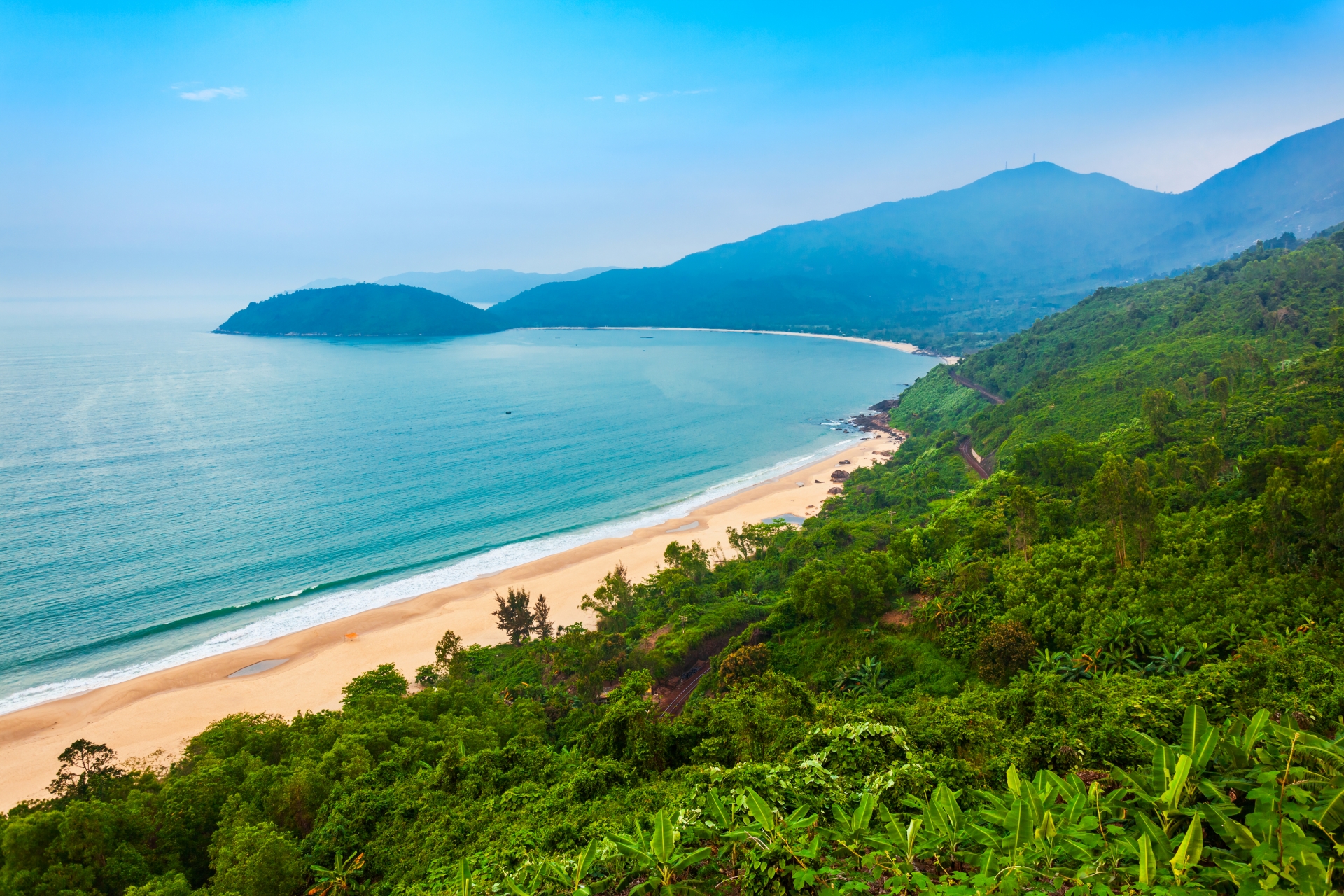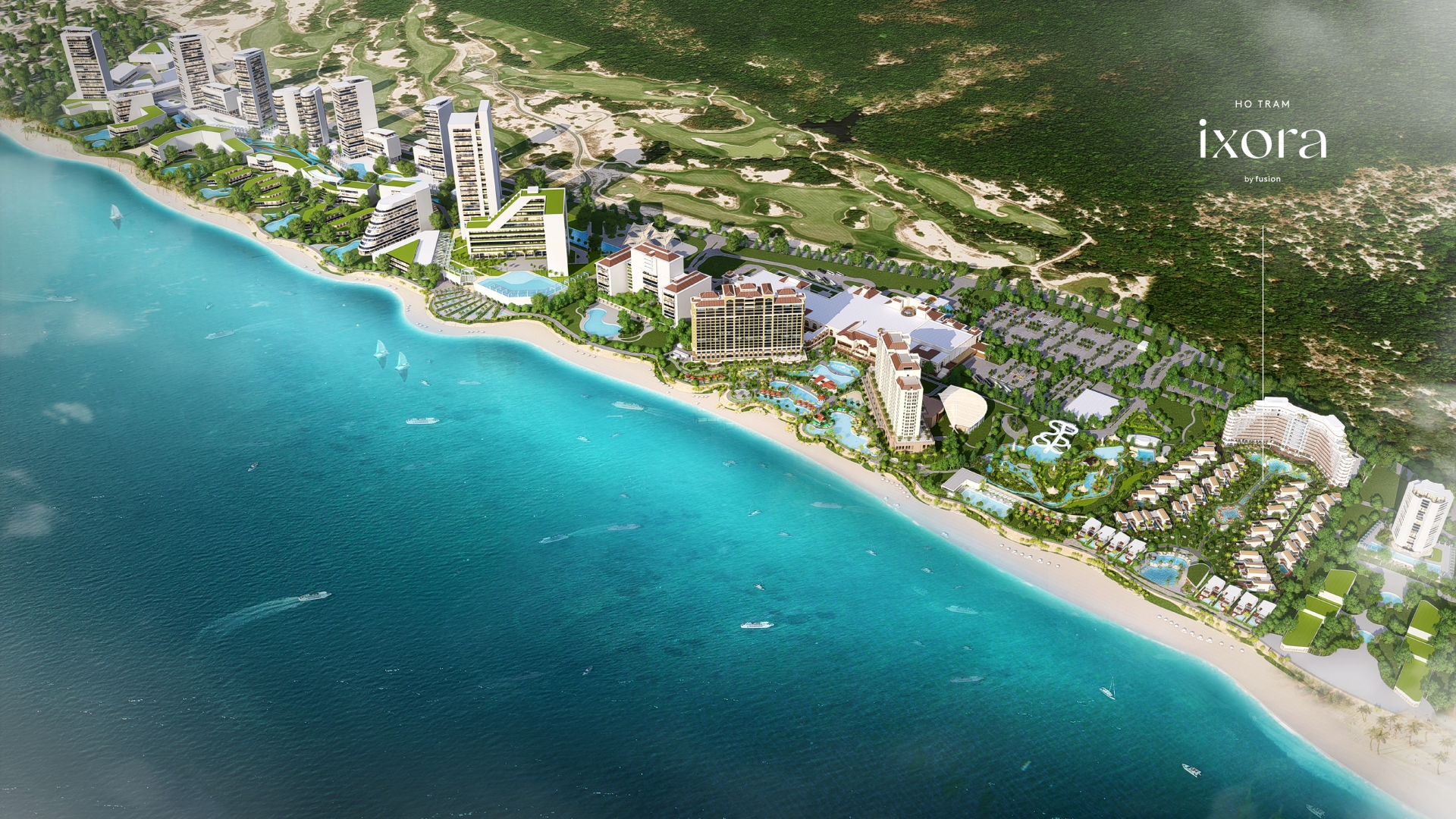Lodgis Hospitality’s long-term vision and investment strategy in Vietnamese tourism
 |
| Vietnam and its timeless beauty |
Vietnam, a truly fascinating country, offers a 3,260km coastline, connecting the north and south with white sandy beaches. Beyond its significant coast, the country boasts overlapping ranges of mountains, primaeval forests, and world-famous caves. The destination is also known for its rich history, deep culture and arts, and unique street food cuisine.
More than its diverse natural landscape, Vietnam also has vibrant cosmopolitan cities such as Hanoi and Ho Chi Minh City, each with their own distinct ambience and rhythm. Hanoi offers a traditional setting with a heritage dating back 1,000 years. Ho Chi Minh City is a high-energy urban and business centre with skyscrapers and a bustling streetscape. There are also the idyllic landscapes of the Vietnamese countryside and craft villages. These include bountiful fruit orchards across the Mekong Delta; narrow Hoi An streets adorned with bright red Bougainvillea trellises of ancient yellow houses; and the terraced paddy fields in Sapa.
Vietnam has become one of the top destinations in the Asia-Pacific region, attracting tourists from all over the world. The US-based Go Overseas website ranked Vietnam 8th on its list of top 10 travel destinations for 2019, saying the nation is “filled with beauty at every turn”. As a home to eight UNESCO World Heritage sites, Vietnam was also rated as one of the 10 most unique destinations in Southeast Asia in 2019 by The Quarterly Tourism Monitor, while Condé Nast Traveler ranked Vietnam 9th of its 20 favourite destinations of 2020.
Factors to turn Vietnamese tourism into an economic juggernaut
Prior to 2020, global demand for travel and tourism was booming around the world, with growth of roughly 4 per cent per annum expected over the next decade (2019-2029). In addition, Vietnam’s GDP growth, young population, and rapidly expanding middle class are all driving tourism. According to World Bank statistics, between 2002 and 2018, GDP per capita in Vietnam increased by 2.7 times, while real GDP grew by an estimated 7 per cent in 2019 – one of the fastest growth rates in the region. According to the International Monetary Fund, Vietnam's GDP per capita ranks fifth in ASEAN, reaching $5,212 by 2025.
Demographic change with a population of 96.2 million in 2019 is expected to increase to 120 million by 2050. Moreover, the proportion of the young population under 35 is around 55.5 per cent, according to the Census Report 2019, while Vietnam's new middle class is expected to reach 26 per cent of the total population by 2026 – all these factors will drive robust demand for tourism. Domestic tourism has experienced an excellent surge – a four-fold increase in the number of domestic traveller-trips, from 20.5 million in 2008 to 80 million in 2018. Generally speaking, in 2015-2019, the tourism industry had a significant growth rate of 22.7 per cent. According to the World Economic Forum's 2019 Tourism Competitiveness Index (WEF), Vietnam ranked 32nd globally (out of 120 countries) in terms of quantity and attractiveness of natural resources and culture, and 3rd in Southeast Asia (after Indonesia and Thailand).
The direct contribution of tourism to GDP is also increasing. If in 2015 tourism contributed 6.3 per cent to the national GDP, the rate in 2019 was 9.2 per cent. Tourism is gradually aiming to become a key economic sector, according to the Politburo's Resolution No.08-NQ/TW dated January 16, 2017.
Despite the current situation of the COVID-19 pandemic, Vietnam’s tourism has remained relatively resilient thanks to strong local demand and the Vietnamese government’s leadership and success in limiting the number of cases, contact tracing, and social distancing. Once international travel resumes, creating significant economic opportunities for Southeast Asian travel destinations, Vietnam’s tourism growth will be higher.
By 2030, tourism is set to become a key industry, making Vietnam one of the top 30 most competitive tourism destinations in the world with an average growth rate of 11-12 per cent per year, contributing 15-17 per cent to GDP.
Lodgis Hospitality – Vietnam’s leading fully-integrated hospitality investment platform with a proven track-record
Realising the enormous long-term potential of the tourism market in Vietnam, in 2016, Warburg Pincus, VinaCapital, and its co-founder Don Lam established Lodgis Hospitality with the vision to aggregate a portfolio of high-quality hospitality assets and build an institutional grade, fully-integrated lodging investment platform.
With its operating headquarters in Ho Chi Minh City as well as with offices in Singapore and Bangkok, Lodgis has a team of highly experienced and dedicated industry professionals with disciplines in investment, asset management, development, project management, design, and operations. Through its wholly-owned hotel management company – Fusion Hotels and Resorts – the company provides management and design consultancy services across a suite of brands including Fusion Resorts, Fusion Suites, Fusion Originals, Maia, Hiive, Glow, Glow the Premium Collection, and Glow Inn.
Today, Lodgis has amassed a portfolio of best-in-class hospitality assets across Vietnam and Southeast Asia, represented with more than 30 hotels, approximately 3,000 rooms under ownership, and approximately 3,100 rooms managed. Leading luxury properties include one-of-a-kind hotels such as the Sofitel Legend Metropole Hanoi, Raffles Le Royal Phnom Penh, and Raffles Siem Reap.
Lodgis owns and manages one of Vietnam’s leading large-scale integrated resorts – Ho Tram Strip Complex – located outside of Ho Chi Minh City, which has the 5-star InterContinental Grand Ho Tram, Holiday Inn Resort, an international-quality casino, and Vietnam’s No.1 ranked golf course.
Fusion Hotels and Resorts has representation in all of the leading cities and resort destinations in Vietnam including Ho Chi Minh City, Danang, Cam Ranh, Phu Quoc, Quy Nhon, and Vung Tau with many more flags under discussion. Glow has properties in Thailand’s most popular markets including Bangkok, Phuket, Pattaya, and Krabi.
 |
| Ho Tram Strip Complex has the 5-star InterContinental Grand Ho Tram, Holiday Inn Resort, an international-quality casino, and Vietnam’s No.1 ranked golf course |
Among one of the most exciting projects at Lodgis is the planned launch and development of Ixora Ho Tram by Fusion located at the Ho Tram Strip Complex, set along the beachfront. This exclusive beachfront development designed by leading international consultants will have 46 pool villas and 164 condotels. Ixora Ho Tram by Fusion will be part of the broader integrated Ho Tram Strip Complex, providing guests a number of restaurant and entertainment options, whilst having a strong sense of privacy. Ho Tram is conveniently located an approximately two-hour drive from Ho Chi Minh City.
This location will benefit from the existing and upcoming infrastructure such as Ho Chi Minh-Long Thanh-Dau Giay Expressway, Ben Luc-Long Thanh Expressway, Bien Hoa-Vung Tau Expressway, Dau Giay-Phan Thiet Expressway, Long Thanh International Airport, and Cai Mep Thi Vai Port. Ixora Ho Tram by Fusion is expected to offer appealing long-term investment potential.
In discussing the company's long-term investment strategy in Vietnam, Peter T. Meyer, CEO of Lodgis Hospitality, shared that, “Vietnam is a beautiful country, ranking among the most exciting travel markets. With its natural beauty, interesting history, unique culture, appealing cuisine, and strong hospitality, it is a very attractive international destination. Given its great prospects, Vietnam is central to our investment strategy. We hope to play our part in further developing Vietnam into a world-class tourism destination.”
What the stars mean:
★ Poor ★ ★ Promising ★★★ Good ★★★★ Very good ★★★★★ Exceptional
Related Contents
Latest News
More News
- Fusion launches festive wellness and dining packages in Vietnam (December 03, 2025 | 18:59)
- TD CASA and the rise of bespoke interior design in luxury living spaces (December 03, 2025 | 14:14)
- A season of warmth at InterContinental Phu Quoc Long Beach Resort (December 02, 2025 | 16:47)
- Hilton and Sun Group lead Vietnam’s next wave of premium travel (December 01, 2025 | 10:58)
- Young artists shine in Muong Thanh drawing contest (November 24, 2025 | 11:10)
- Celebrate the festive season with tropical flavour at Angsana & Dhawa Ho Tram (November 17, 2025 | 07:33)
- Maia Spa at Fusion Resort & Villas Da Nang wins at World Luxury Spa Awards (November 14, 2025 | 17:53)
- Phu Quoc celebrates passion as well as family pride (October 27, 2025 | 09:00)
- Vietnam named among world’s top four culinary destinations (October 24, 2025 | 17:09)
- Amanoi wins Three MICHELIN Keys at 2025 awards (October 21, 2025 | 16:49)

 Tag:
Tag:






















 Mobile Version
Mobile Version